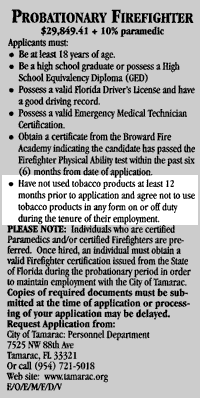
Risk Management
The daily habits of people have a great deal more to do with what makes them sick and when they die than all the influences of medicine.
L. Breslow, M.D.
Seven habits associated with health and longevity include: regular exercise, adequate sleep, a good breakfast, regular meals, weight control, abstinence from smoking and drugs, and moderate use of alcohol.
According to Breslow, men could add 11 years of life and women 7 years by following six of the seven habits.
Smoking, Injury, and Long-Term Disability
Everyone knows about the health hazards of smoking, including lung cancer, coronary artery disease, stroke, and chronic obstructive lung diseases such as emphysema and chronic bronchitis. Recent research has added to that list. Some of the additions are surprising, such as depression and male impotence (erectile dysfunction). Wildland fire smoke has the potential to produce similar health problems, but the exposures are seasonal and intermittent, allowing the lungs time to recover. Combining cigarette smoke with wildland firefighting eliminates the opportunity for recovery, and may exacerbate the health risks, as is the case for the combination of smoking and asbestos exposure. According to the 1985 Surgeon General's report, The Health Consequences of Smoking: Cancer and Chronic Lung Disease in the Workplace, asbestos workers are five times more likely to die of lung cancer than the nonsmoking public. Smoking increases the risk of lung cancer 10 times, but the combination of asbestos exposure and smoking a pack of cigarettes or more a day increases the risk of death from lung cancer 87 times.
Recently researchers have demonstrated relationships among tobacco use, illness, injury, and long-term disability. Smokers and snuff-takers suffered more injuries in a 1997 study of Norwegian infantry conscripts undergoing physical training. Significant correlations were observed with smoking and injury, higher total lost workday injuries, and illnesses in a 1999 study of manual material handlers in the United States. In 1999 Eriksen found that a job with heavy lifting and much standing was associated with lower back pain in smokers, but not in nonsmokers. Musculoskeletal disorders were associated with cigarette smoking in a 1996 study of U.S. automotive workers, and the problems increased with exposure. Among smokers who were taking physical exercise less than once a week, Eriksen found that smoking predicted long-term work disability 4 years later. Ueno and coworkers found that musculoskeletal pain in the hand, arm, and lower back was more likely among construction workers who smoked 20 or more cigarettes a day.
Researchers hypothesize that smoking constricts blood vessels and limits blood flow to muscles. These changes could lead to overuse injuries, lower- back pain and long-term disability. Army studies published in 1996 have documented higher musculoskeletal injury rates among smokers. Smokers are believed to be greater risk takers, heavier users of alcohol, and more frequently diagnosed with depression. They have been shown to have impaired healing of wounds and fractures, as well as chronic demineralization of bone, potentially increasing their susceptibility to fractures. Smoking has also been linked to an increased risk of overuse injuries, motor vehicle accidents, industrial accidents, lower back and shoulder pain, burns, fire deaths, and suicide.
The implications for wildland firefighting are obvious: firefighting is prolonged arduous work, with repetitive motions and heavy lifting. Any attempt to address problems of illness and injury among firefighters must consider those at higher risk, such as smokers and smokeless- tobacco users. In a 1998 study, Eriksen and coworkers found no association between smoking and long-term work disability for smokers who exercised regularly. One approach would be to require regular physical training. A more controversial approach would be to prohibit wildland firefighters from smoking, on and off the job.

In 1990 the Tenth Circuit Court of Appeals upheld a fire department's right to prohibit personnel from smoking cigarettes both on and off the job. The suit was filed by a firefighter who was fired by the Oklahoma City Fire Department for smoking on an unpaid lunch break away from department property. The court ruled that an employee's freedom may be infringed if there is a rational relationship between a rule and a legitimate concern of the department. Fire organizations are concerned about the health and safety of their employees. They spend millions of dollars for medical exams, lung function tests, and respiratory protection. It is difficult to determine the contribution of an occupational smoke ex-posure to a respiratory problem when the employee is a smoker.

- Have not used tobacco products at least 12 months prior to application and agree not to use tobacco products in any form on or off duty during the tenure of their employment.
Job announcement in Fire-Rescue Magazine, February 2000
Since smoking is associated with illness, injuries, lower-back problems, and long-term disability, the wildland fire community should consider ways to reduce the problem and its associated costs.

